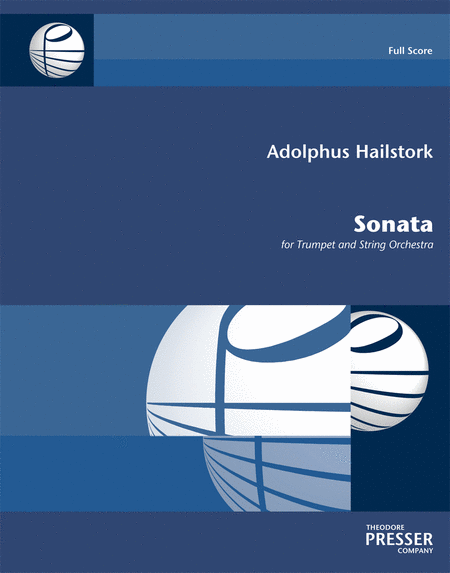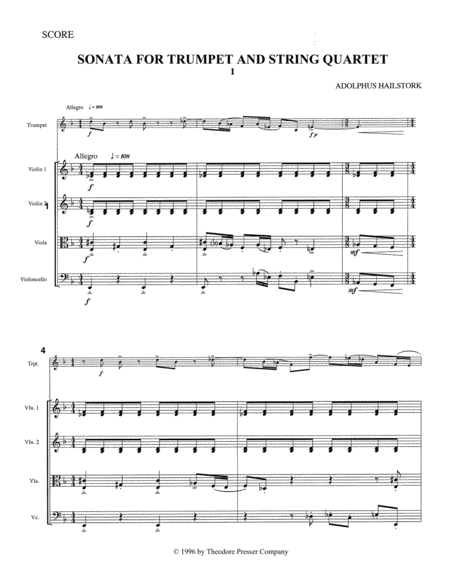Sonata for Trumpet and String Orchestra
large orchestra score
-
Ships in 2 to 3 weeks
Details
Description
SKU: PR.41641625L
Large orchestra score. Composed by Adolphus Hailstork. This edition: Large Score. Contemporary. Large Score. With Standard notation. Composed 1996. 72 pages. Duration 21 minutes. Theodore Presser Company #416-41625L. Published by Theodore Presser Company (PR.41641625L).UPC: 680160643288. 11 x 14 inches.
The Sonata for Trumpet and Piano was written in 1996 for the husband and wife team of Rodney Mack, trumpet and Karen Walwyn, piano. To encourage more performances, I transcribed it for trumpet with string quartet, and trumpet with string orchestra. Then I substituted a clarinet part for the trumpet part in all three versions. The first movement is in sonata form. The thematic material and the rhythms are influenced by blues and jazz. The snappy beginnins is followed by a muted theme two. The development begins with repeated dark chords in the piano, and gradualy builds up to a climax before theme one returns. A descending series of arpeggios in the trumpet bring the movement to a bitonal ending. The second movement begins with a quiet figuration in the piano, which repeats freely, under short statements in the trumpet. These mournful fragments are notated to allow the soloist to vary the number of times they are repeated. Gradually the piece unfolds in a through-composed song. The middle section begins with clusters in the piano and builds to a climax with the introduction of sixteenth notes. The tranquility of the opening returns, and brings the movement to a quiet close. The third movment is in sonata form. Theme one is a high energy idea based on asymmetrical meters (ex. seven-eight, and eleven-eight), and a couple of motives from Puccini operas. Theme two is a slower treatment of the piano idea that opened the movement. The development tosses all the material around vigorously. After a short, quiet return of theme two, the coda begins. This includes a cadenza, and a final dash to the end.


 Share
Share